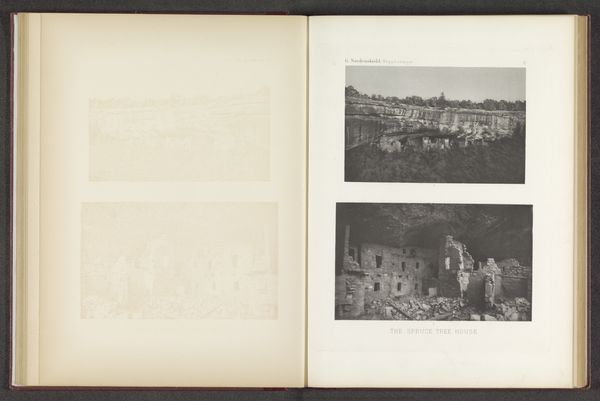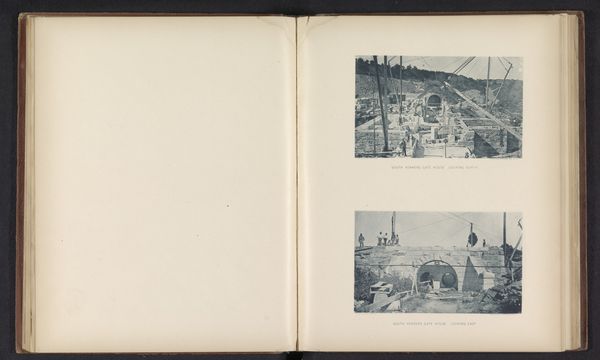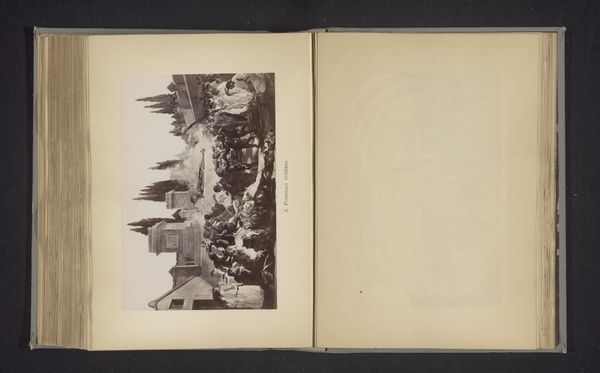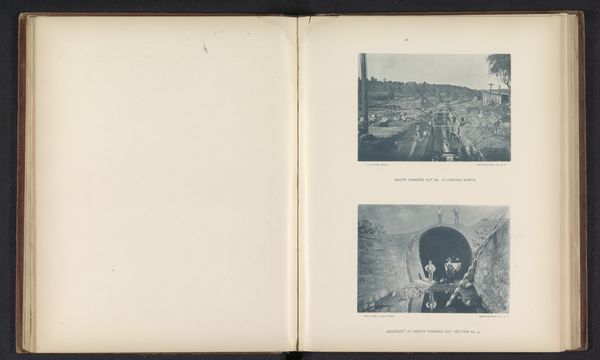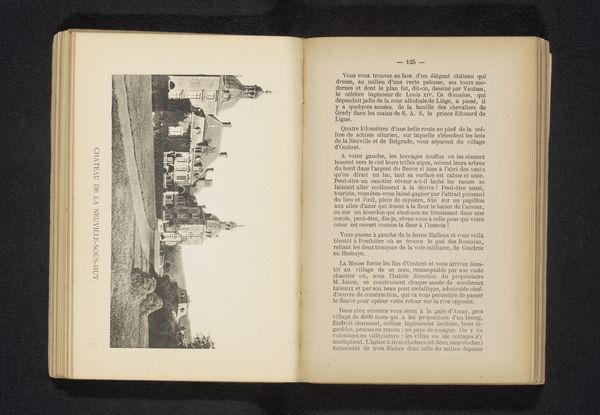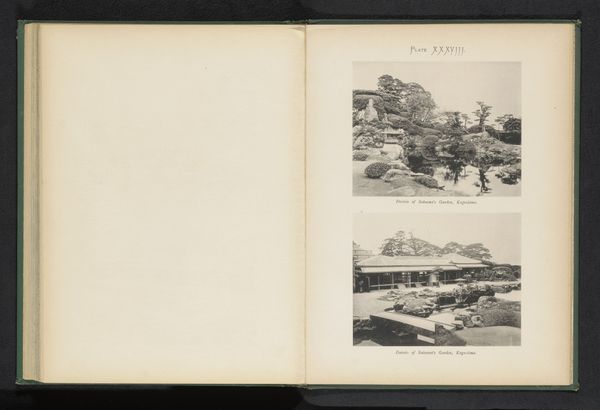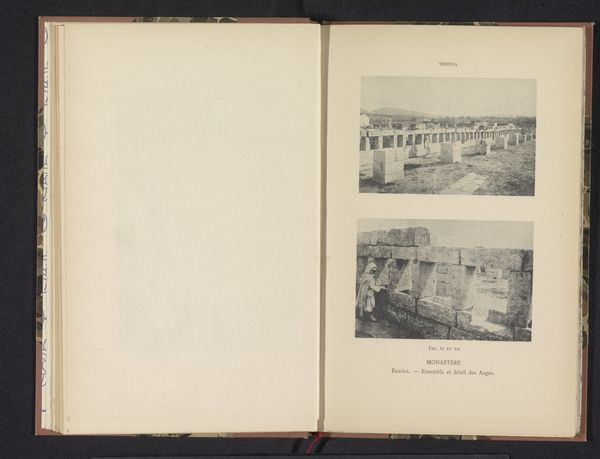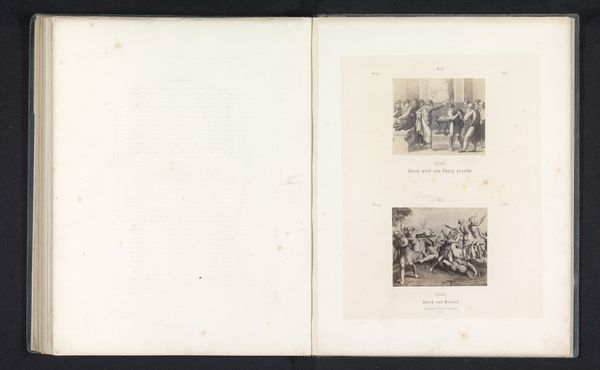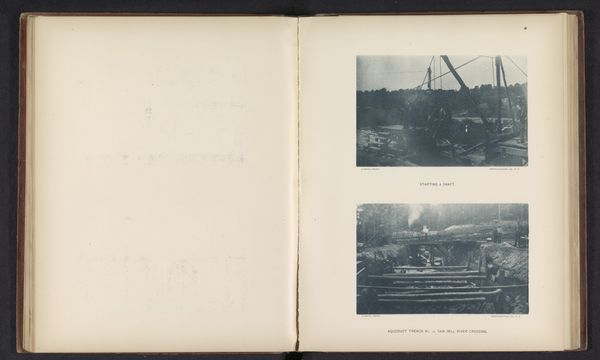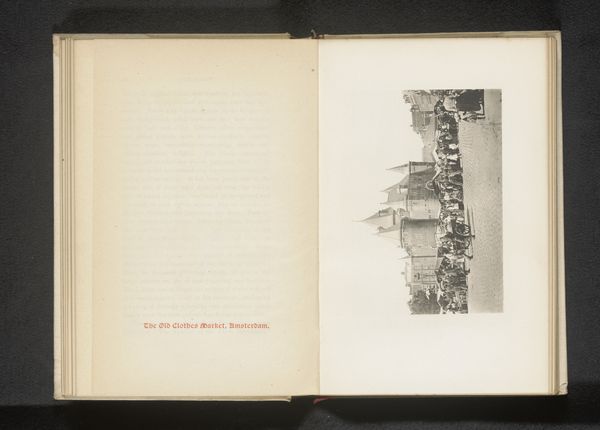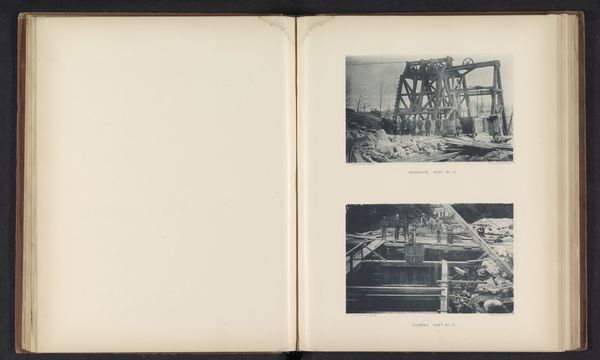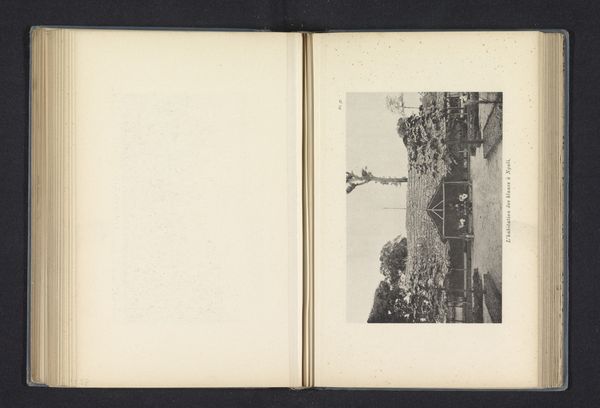![['Shaft no 22', 'Shaft no 19 between shifts'] by George P. Hall & Son](/_next/image?url=https%3A%2F%2Fd2w8kbdekdi1gv.cloudfront.net%2FeyJidWNrZXQiOiAiYXJ0ZXJhLWltYWdlcy1idWNrZXQiLCAia2V5IjogImFydHdvcmtzLzM5ZDdkNWRmLTBhZDEtNGJlZi1hZGJhLTUwZmYwYWZkM2M4MC8zOWQ3ZDVkZi0wYWQxLTRiZWYtYWRiYS01MGZmMGFmZDNjODBfZnVsbC5qcGciLCAiZWRpdHMiOiB7InJlc2l6ZSI6IHsid2lkdGgiOiAxOTIwLCAiaGVpZ2h0IjogMTkyMCwgImZpdCI6ICJpbnNpZGUifX19&w=3840&q=75)
print, photography, albumen-print
#
ink paper printed
# print
#
landscape
#
photography
#
coloured pencil
#
albumen-print
#
realism
Dimensions: height 345 mm, width 272 mm
Copyright: Rijks Museum: Open Domain
Curator: We’re looking at a page from a photographic album by George P. Hall & Son, dating to before 1887. It features two images: ‘Shaft no 22’ and ‘Shaft no 19 between shifts’. They appear to be albumen prints depicting coal mining operations. What strikes you first about these images? Editor: The sheer density of humanity around that lower shaft, that "Shaft no 19"… It feels claustrophobic, a teeming mass at the mouth of the earth. And yet, somehow hopeful, maybe because they’re "between shifts." A strange optimism emanates from the print despite the darkness of their labor. Curator: Yes, "optimism" is interesting. Looking closely, we can see the specifics of the printing process: the subtle tonal gradations possible through the albumen process, which required a delicate hand to expose and develop. How might those particular production conditions be reflecting what’s shown? Editor: Exactly! Albumen prints were all about light and texture. Here, the sunlight gleaming on the workers’ faces and clothes contrasts dramatically with the hulking darkness of the machinery. These photographic materials are really showing the textures of early industrial labor – an emphasis that almost seems intentional, and an inherent class commentary on this environment. Curator: Perhaps, because they do reveal much about labor, both physically and chemically: miners extracting coal and photographers meticulously coaxing images from light-sensitive materials. Think about what both entail: exhausting physical work that also depended on a great deal of invisible, specialized skill. The material making of these images is closely tied to the activity in the scene. Editor: I’m completely fascinated. This pairing isn't merely documentary; the albumen gives an ethereal quality. It's a process-driven representation that gives beauty to industry. It also feels ghostly, an imprint on paper that has become history itself. I wish we could smell and feel that world; this labor. Curator: I agree. Both as a witness to its time and its use of process, this photographic collection by George P. Hall & Son gives us so much to consider when examining this historical moment.
Comments
No comments
Be the first to comment and join the conversation on the ultimate creative platform.
